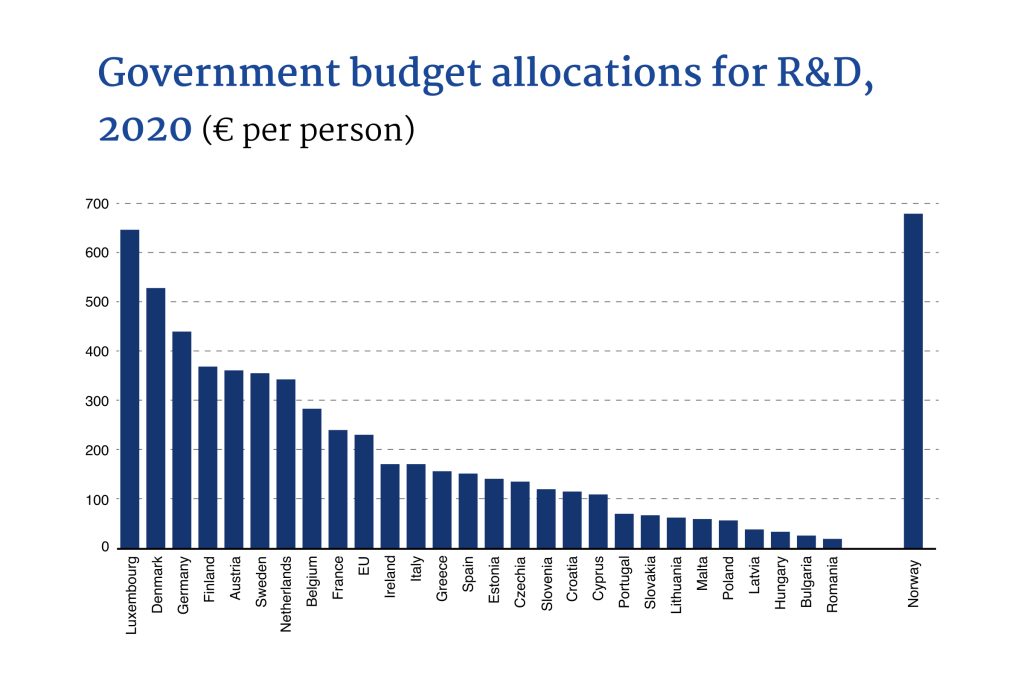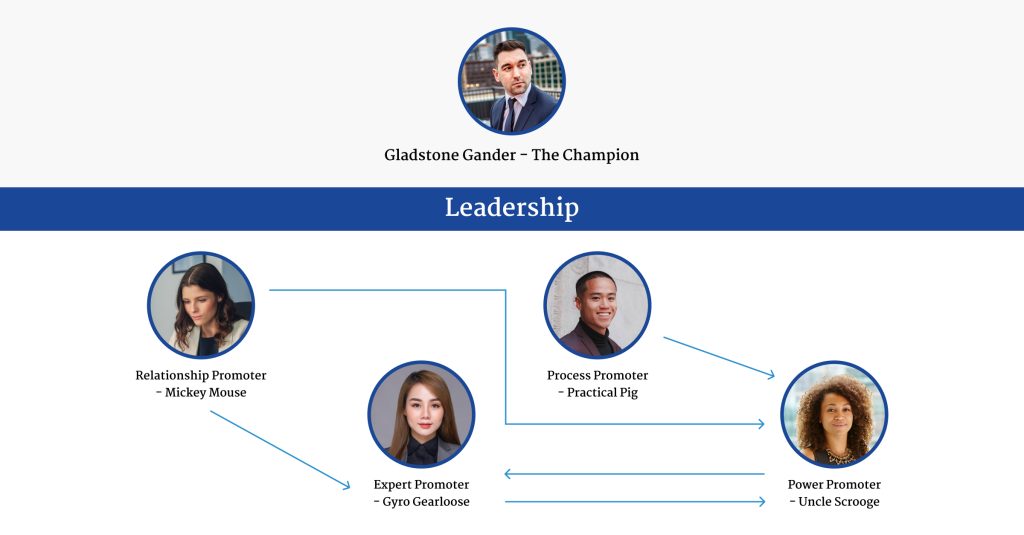
Cold fact: Finland needs new corporate investments to survive.
Although the claim may sound dramatic, investments are crucial for Finland’s corporate destiny.
Investments have a significant impact on productivity and economic growth. If productivity does not improve, economic growth will slow down. While the public sector is also an active investor in Finland, economists suggest that sustainable economic growth is most likely to be generated through corporate investments.
Despite their profitability, Finnish companies are investing less than expected. In the 1980s, Finland had an internationally high investment rate and its economy was primarily driven by investments. However, surprisingly, investment in Finland has not continued to follow the same trajectory in the 2010s up until now.
Finnish companies and the public sector are investing less compared to their counterparts in other countries, which is adversely affecting Finland’s competitiveness and economic growth. For instance, Sweden and Norway have ramped up their investment activities since the beginning of the 21st century and have surpassed Finland in terms of investment levels.

There’s not just a variation in the amount of investments, but also in their quality. Typically, Finland places a significant emphasis on investing in machinery and infrastructure, while Sweden, on the other hand, tends to invest in developing IT expertise. Sweden is prioritizing a fresh wave of industrialization and is actively supported by research in this area.
Meanwhile, Finland’s position as a leader in research expenditures has declined following the downfall of Nokia’s phone production. In 2020, Finland’s spending on research and development (R&D) amounted to approximately 7 billion euros, accounting for 3% of its GDP. However, this ratio was one percentage point higher less than a decade ago. While Finland’s R&D expenditure remains relatively strong in comparison to other European countries, it has fallen behind countries such as Sweden and Germany in recent years. As investments in intangible assets and product development have decreased, this has resulted in slower economic growth.
Startup-Style Innovative Entrepreneurship Might Help Finland Climb Out of the Investment Hole
As early as 1982, Ravenscraft and Scherer discovered that a company’s investment in R&D is a significant indicator of its innovativeness, particularly among established companies.
Evidently, the R&D spending of established Finnish companies has not been enough to keep up with the pace. As one obvious remedy, we have witnessed the strong emergence of startup companies in recent years. In turn, these companies have filled the gap in the R&D activities of larger corporations by developing technological innovations that aim for rapid growth.
In 2020, Finnish startups managed to raise an impressive amount of approximately one billion euros in funding, and the total funding for 2021 broke records, reaching 1.2 billion euros. Concurrently, the domestic business sector also allocated more than 4 billion euros towards R&D activities. When compared to this figure, the startup funding can be deemed a substantial investment injection towards the growth, product development, and internationalization of Finnish companies.
Sami Lampinen, the founder of the successful private equity company Inventure, has witnessed the evolution of the Finnish startup scene up close for almost 30 years. In an interview by Helsingin Sanomat, Lampinen said, “Over the next few years. technology will drastically change all industries, from the automotive industry and battery technology to food production. Companies all over the world try to respond to these challenges and, at the same time, growth opportunities as best they can, often by developing the technology of the future.” He continues with stark realism: “If new technology isn’t developed in Finland, it will likely be developed elsewhere. Unfortunately, this means that the added value and benefits from the technology will go elsewhere.”
In Finland, big industrial corporations like Fortum and Wärtsilä are also investing in technology startups that are transforming their respective industries. This begs the question: Is relying solely on their own R&D not enough for these large companies to make investments that drive growth? Or alternatively, can the unbiased and innovative mindset often found in startups and other growth-oriented ventures be effectively integrated into larger corporations?
Intrapreneurship — Entrepreneurship with a Safety Net
Professor of Practice Torkel Tallqvist, from Hanken School of Economics, has focused his work on investigating entrepreneurship in corporations. This research largely compares startup entrepreneurship to its growth opportunities within large corporations such as StoraEnso and Neste.
“Intrapreneurship, or corporate entrepreneurship, has increased its role as large corporations have learned to notice that the technological know-how of industry newcomers or the startups they finance is, to some extent, ahead of theirs. This has provided a good benchmark to motivate employees to a similar drive to develop innovations and investment ideas as part of a more traditional R&D framework,” says Tallqvist.
Tallqvist highlights a common problem faced by many startups, which is the lack of resources. He cites research conducted by Day in 1994, which shows that larger firms can outperform startups in entrepreneurship due to their superior resources. While internally generated funds provide tenacity for bottom-up opportunities that competent leadership can take advantage of, Day argues that merely spending more money is not enough; having suitable champions is also crucial. Tallqvist suggests that perhaps knowledge of bottom-up championing is lacking in Finland, referring to the promoter model he introduced later on.
Gifford and Elizabeth Pinchot coined the term ‘intrapreneurship’ back in 1978. It is defined as “the act of behaving like an entrepreneur, while working within a large organisation”. Opposite to entrepreneurs, an intrapreneur knows failure does not have a personal cost, since the company absorbs potential losses.
Intrapreneurship can quite aptly be described as entrepreneurship with a safety net. “When you are innovative in an existing organisation, you have a support system that entrepreneurs don’t have. If you fail, you won’t suffer financially. Usually, a ‘failure’ is a developmental experience that prepares you for your next venture,” Bruce Fisher, a professor at Elmhurt University, said in an 2021 article.
The organisations that have embraced intrapreneurship have achieved higher financial returns, increased productivity, more innovation, and higher levels of employee engagement, Zafar Siddiqui, a Canadian learning and strategy consultant, claimed in a recent article. And science backs him up.
Intrapreneurship Provides an Innovative Platform for R&D and Investments
According to Felicio, Caldeirinha, and Rodrigues, the increased market share, growth, and sales resulting from intrapreneurs and corporate entrepreneurs come as a result of their proactivity, innovative action, and propensity for risk.
Spescha and Worter state that firms with R&D activities have an innovation performance effect of fixed capital investment that is about 5% higher than firms without R&D activities. This is evidence that fixed capital investments based on R&D activities yield a significant innovation performance premium.
The list of favorable research results continues: Zahra and Covin (1995) report a moderate correlation (0.4 out of 1) between entrepreneurial posture and a firm’s performance. Ravenscraft and Scherer (1982) found evidence that R&D investment returns follow with a 4-6 year lag. And Biggadike (1979) reported on corporate ventures that, on average, take 8 years to break even, reaching maximum profitability in 12 years.
In a nutshell, we can state that intrapreneurship accelerates R&D activity, which consequently accelerates investment activity, resulting in better profitability in the long run.
Intrapreneurship is Not a Solo Effort – Success Calls for Strong Promotors
After having proven that intrapreneurship contains significant potential to boost innovation and profitable investment initiatives inside larger-scale corporations, the key question remains: How can we foster intrapreneurship?
Knowledge on this issue has improved a lot since the Pinchot 1978 proposition. The scientific evidence is quite clear: Entrepreneurship in corporations is not a silver bullet, it requires a steady, long-term platform to flourish.
In brief and straightforward terms: We need the right people in the right milieu.
Entrepreneurs operating within large corporations face a distinct environment that is often characterized by bureaucracy and indifference, which can pose significant challenges to successful intrapreneurship. This presents a challenge for top management: how can they create a supportive environment that allows for conditioned autonomy, experimentation, and patience with prototyping? The level of autonomy depends on how top leaders identify suitable individuals to operate as intrapreneurs and how they support their initiatives.
While entrepreneurs and corporate entrepreneurs share a similar starting point – possessing the right attitude and natural drive for initiative – there is a significant difference. Even if suitable corporate entrepreneurs exist within a conducive environment, intrapreneurship cannot be successful through individual effort alone. Corporate entrepreneurs require a network of promoters both inside and outside the organization to rely on and help navigate the existing organizational structures.
Professor Tallqvist has created a creative model to describe the network and dynamics of promoter roles. The model is based on the pioneering work of Witte, Hauschildt, Chakrabarti, and Gemünden (2010) on intrapreneurship promoters. However, Tallqvist has used carefully selected Disney characters as examples of promoter roles to make the different roles more easily understandable in his lectures.
Let’s briefly examine the key promoter roles according to Tallqvist’s model.

“Gyro Gearloose” — Expert Promotor
What would you call a brilliant inventor who creates groundbreaking innovations? Often, they are nicknamed “Gyro Gearloose.” Gyro Gearloose is also known as an Expert Promotor.
An Expert Promotor possesses specialized technical knowledge to advance an idea, find new solutions, or refine a proposed solution. They require autonomy in their daily work to generate alternative innovative concepts. However, it’s important to remember that the Little Helper (for those familiar with Disney’s Donald Duck universe) is always behind them.
“Uncle Scrooge” — Power Promotor
Who will provide the necessary funding and resources? Who plays the role of the Uncle Scrooge in the corporation? Power Promoter holds the necessary hierarchical authority to drive the project forward, allocate required resources, and assist in overcoming any resource-related hurdles that may arise during the project’s execution. They are the primary advocate safeguarding the innovation project from opposition.
“Practical Pig” — Process Promotor
A Process Promoter gains influence through their organizational expertise and connections within the organization. They act as a mediator between the Power and Expert Promotors, and possess the necessary diplomatic skills to bring together the right people for the innovation process. This can be likened to the story of the Three Little Pigs, where each pig utilized their unique skills and building styles to construct houses that could withstand the attack of the Big Bad Wolf. The Practical Pig emerged as the most successful, similarly, the Process Promotor plays a crucial role in ensuring the success of the innovation process.
“Mickey Mouse” — Relationship Promotor
The Relationship Promotor is well-connected, both within and outside the organization, with customers, suppliers, and research partners. They play a key role in fostering cooperation between different organizations. They enjoy interacting with people and bringing together the right parties to make innovation efforts successful. In a way, they’re like Mickey Mouse; a familiar character we all know.
“Gladstone Gander” — Champion
Consider Steve Jobs or Risto Siilasmaa, who achieved great success in their respective industries through a combination of skill and good fortune, much like Glander Gladstone in Duckburg.
A Champion is an individual who emerges informally within an organization and makes a decisive contribution to innovation by actively and enthusiastically promoting its progress through critical stages of development. The Champion is characterized by a strong desire for autonomy, which they rely on to provide comprehensive support for the innovation endeavor. This enthusiasm for innovation can only be generated through an internally felt excitement for working on the innovation, which is why Champions typically work closely with Expert Promotors.
Pioneering Corporate Entrepreneurs Have Already Paved the Way, but Who’s Next?
Have you heard of Matti Makkonen? Maybe not, but you’re probably familiar with SMS.
Matti Makkonen is a prime example of a corporate entrepreneur. He earned the nickname “father of SMS” after developing the concept of sending messages through mobile networks while working as an engineer at Nokia. However, despite the title, he was always quick to point out that he didn’t invent the technology alone. He had a skilled team around him and internal advocates who shared his belief in the power of text messaging.
According to Tallqvist, Nokia is still a strong proponent of intrapreneurship as a means of investing in groundbreaking R&D and product development in Finland. He also cites Kone, UPM, StoraEnso, and Elisa as other companies with successful environments for intrapreneurship to thrive. It’s possible that we’ll see a new generation of Finnish internal startups with their own unique identities in the future – intrapreneur organizations that operate end-to-end, following the example of companies like MasterCard Labs, Deutsche Telekom Hubraum, or Telefonica Open Future.
Facilitating Intrapreneurship in Your Organization
If you hold the position of CEO, Board Director, or HR professional in a corporation with a focus on growth, it is crucial for you to start pondering questions such as:
- Who among our staff could be considered the “Gladstone Gander” or “Mickey Mouse”?
- What prerequisites or qualifications would we expect from our potential “Uncle Scrooge”?
- How can I ensure that we find the most suitable individuals to foster genuine intrapreneurship and support our growth?
Intrapreneur Team of the Year
Since 2009, Sweden has been utilizing an effective tool to promote intrapreneurship through the “Årets intraprenör” contest, chaired by Klas Karlsson, which annually awards individuals who demonstrate exceptional abilities in discovering and implementing new ideas and effectively organizing resources to achieve outstanding results.
Why not adopt a similar approach in Finland and actively promote intrapreneurship in the public sector? Do you happen to know of a worthy candidate to nominate as “Vuoden intrayrittäjä”?
About the Author
Mikael Stelander founded the Stanton Chase Helsinki office in 2005 and currently serves as its Managing Partner. He possesses extensive experience in various business sectors, with a focus on technology and private equity.
Mikael has an impressive track record of placing CEOs in both public companies and growth companies, with one of the latter eventually becoming a unicorn. His leadership has also led the Stanton Chase Helsinki office to win the Stanton Chase Office of the Year award multiple times. In 2015, Mikael co-authored a book on executive search with his colleagues.
Between 2012 and 2017, Mikael held the position of Vice President EMEA at Stanton Chase, and from 2007 to 2011, he served as the Global Practice Leader in Technology. He is one of the most experienced international executive search consultants in the Nordics, having started his career in executive search in 1998.
Click here to learn more about Mikael.
How Can We Help?
At Stanton Chase, we're more than just an executive search and leadership consulting firm. We're your partner in leadership.
Our approach is different. We believe in customized and personal executive search, executive assessment, board services, succession planning, and leadership onboarding support.
We believe in your potential to achieve greatness and we'll do everything we can to help you get there.
View All Services